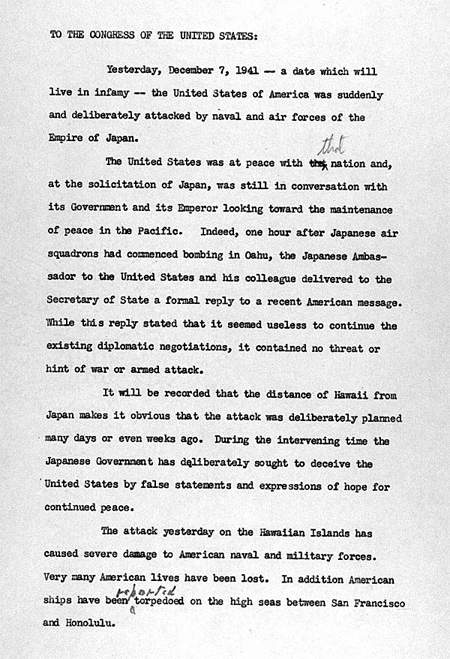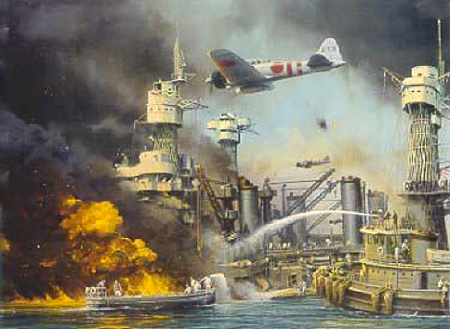Directions: Read and review the following information about U.S. involvement in World War II. Use the chart below to summarize the most significant battles in which the United States participated. The first one has been completed for you as a model. (Note: Click on the link below to print a copy of the chart.) Fill in the chart as you progress through this lesson. This information will help you complete the timeline assignment.
| Battle | Year | Summary | Significance |
| Pearl Harbor | 1941 | Japanese Imperial Forces attacked US Naval Headquarters at Pearl Harbor, Hawaii | The attack on the United States brought America into World War II. |
| North Africa Campaign | |||
| Battle of Italy | |||
| D-Day | |||
| Battle of the Bulge | |||
| Invasion of Germany | |||
| Battle in the Philippines | |||
| Battle of Midway | |||
| Battle of Coral Sea | |||
| Bombing of Japan |
![]() Watch the following video of the Bombing of Pearl Harbor.
Watch the following video of the Bombing of Pearl Harbor.
Source: WWII: Japan bombs Pearl Harbor, Britannica.com, YouTube
On December 7th, 1941, Japanese Imperial Forces attacked the United States Pacific Fleet Headquarters at Pearl Harbor, Hawaii.

Charcoal and chalk drawing: The Japanese Sneak Attack on Pearl Harbor, Griffin Bailey Coale, navy History & heritage Command
In response to the Japanese attack, the following day President Franklin Roosevelt asked Congress for a declaration of war in what became known as "Day of Infamy Speech."

Source: Date of Infamy, Franklin Roosevelt, National Archives
After the surprise Japanese attack on the Pearl Harbor, the United States had no choice but to enter World War II.

Source: Pearl Harbor, Focal Point.
In this lesson, you will examine how the United States was able to conduct a war in several locations around the world. You will examine various battles of World War II and determine their importance in the outcome of World War II.